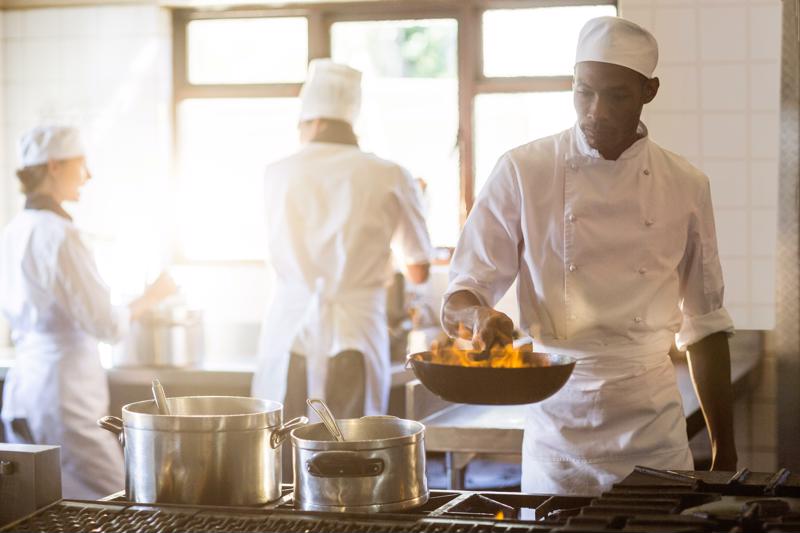Chefs spend an absurd amount of time on their feet. Ten-hour shifts, sometimes six days a week or more, are not unusual in the restaurant industry. Multiply that over the course of months or years, and you end up with many tens of thousands of hours of standing and walking. That's a lot of time spent exposed to the many hazards of a professional kitchen, and more than enough daily strain to cause discomfort down the road without the right footwear.
For the online culinary students at the Auguste Escoffier School of Culinary Arts, chef shoes may seem an afterthought at first, but the right pair is a lifesaver in a busy kitchen environment.
What makes a good chef shoe?
Ideally, you want something that looks clean and professional but is also highly functional to keep you safe. Resist the urge to chase a bargain. Spending a few extra dollars to invest in a good pair of shoes is well worth it if it means they'll that comply with your dress code and help you stay on your feet all day without incident. You can usually find a reliable pair for anywhere between $50 to more than $200.
With that in mind, make sure pay special attention to these attributes as you shop:
1. Grip
Alongside burns and cuts, slipping is one of the biggest back-of-house risks to chefs, line workers and prep cooks. Most restaurants take extra caution to quickly clean up any mess in the kitchen. Nevertheless, spilled water, wayward stews, grease slicks and other hazards are inevitable, and can come at the expense of your safety if you're not prepared with the right footwear.
Even if you're not technically required to wear non-slip shoes, we highly recommend them. Make sure that you purchase a pair of kitchen-friendly kicks that are marketed as non-slip. Look for a shoe with rounded edges that won't trap water under the sole, that have plenty of grooves and treads, and that have a rubbery feel that can brace against flat surfaces.
 Keep your feet safe from flaming hot morsels, grease and other stray kitchen hazards.
Keep your feet safe from flaming hot morsels, grease and other stray kitchen hazards. 2. Protection
The other threat posed by spills is the risk that hot oil and other liquids can seep through the surface of your shoes and cause severe burns – or just general sogginess throughout the remainder of your shift.
We would recommend something made from leather or another protective material that covers most of the front of your feet, as this is the area that is most exposed to falling objects – including sharp kitchen utensils and hot food items. While Crocs have become more popular in the kitchen because they're breathable and water-resistant, they are fairly lightweight and many variations have holes in the surface, characteristics that make them a somewhat risky choice.
3. Comfort
You will undoubtedly feel the effects of being on your feet for 10 hours at a time, but much less so if you invest in a pair of shoes that fit well and are made from a breathable fabric that won't cause excessive sweating.
Whether you go with a full-coverage shoe, or something slip on that helps with aeration, make sure that you can tolerate spending an entire day with them. Keep your receipts following a new footwear purchase just in case.
Where to find good chef shoes
Affordable brands might include slip-on shoes such as Klogs, but also more generic shoe names like Sketchers and New Balance, which offer shoes and sneakers for work purposes that have a clean black finish, a tough exterior and breathable cotton interior. Vans is also a reliable mid-range shoe and has even collaborated with chefs to make kitchen-friendly footwear. Higher-end chef shoes include Birkenstocks and Dansko, which offer full-coverage footwear and slip-on shoes.
Selecting chef shoes won't be biggest decision you make on your long and winding culinary arts journey, but it's an important one. Shoes wisely.

